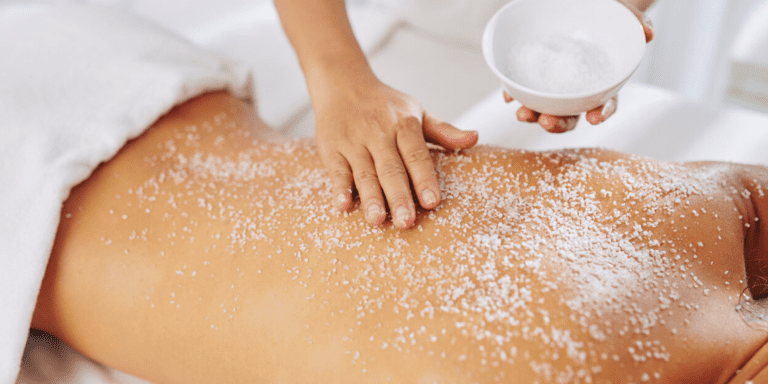Skin guards against infections control body temperature and allow for touch (tactile) sensations as the body’s largest organ. The epidermis, dermis, and hypodermis are the three primary layers of the skin, which are susceptible to a variety of issues such as skin cancer, acne, wrinkles, and rashes.
What exactly is the skin?
The skin, which is made up of water, protein, lipids, and minerals, is the body’s largest organ. Your skin keeps you healthy by protecting you from pathogens and regulating your body temperature. Skin nerves allow you to feel heat and cold feelings.

The integumentary system includes your skin, hair, nails, oil glands, and sweat glands. The outer coating of a body is referred to as “integumentary.”
What are the different layers of skin?
The skin is made up of three layers of tissue:
The epidermis is the top layer of the skin.
The dermis is the middle layer of the skin.
The bottom or fatty layer of the skin is called the hypodermis.
What is the function of the epidermis (skin’s top layer)?
The epidermis is the visible and touchable top layer of your skin. The skin cells are made up of keratin, a protein found inside skin cells that, along with other proteins, binds together to form this layer. The epidermis is the outer layer of the skin.
The epidermis serves as a protective barrier, preventing bacteria and pathogens from infecting your body and bloodstream. It also shields you from the rain, the sun, and other elements.
The epidermis produces new skin cells on a regular basis. Every day, your body sheds about 40,000 old skin cells, and these new cells replace them. Every 30 days, you get a new layer of skin.
The epidermis contains Langerhans cells, which are part of the body’s immune system. They aid in the battle against bacteria and diseases.
Provides skin colour: Melanin, the pigment that gives skin its colour, is found in the epidermis. The colour of your skin, hair, and eyes is determined by the amount of melanin in your body. Melanin-producing individuals have darker skin and may sunburn more quickly.
What is the function of the dermis?
The dermis accounts for 90% of the skin’s thickness. This is the skin’s middle layer:
Collagen and elastin are two proteins that give skin cells their strength and resilience. Elastin, a protein present in the dermis, keeps the skin flexible. It also aids in the reshaping of stretched skin.
Hair follicle roots link to the dermis, causing hair to grow.
Nerves in the dermis let you know whether something is excessively hot to touch, scratchy, or very soft. These nerve receptors also aid in the perception of pain.
Oil glands in the dermis help maintain the skin supple and smooth by producing oil. When you swim or get trapped in a thunderstorm, oil keeps your skin from absorbing too much water.
Sweat glands in the dermis produce sweat, which is released through skin pores. Sweat aids in the regulation of body temperature.
Blood is supplied by: The dermis’ blood vessels supply nutrients to the epidermis, keeping the skin layers healthy.
What is the function of the hypodermis (skin’s bottom layer)?
The fatty layer, or hypodermis, is the skin’s bottom layer. The hypodermis is the layer beneath the epidermis.
Muscles and bones are cushioned by fat in the hypodermis, which protects them from injury when you fall or are in an accident.
Connective tissue is present: This connects the skin layers to the muscles and bones.
Nerves and blood vessels are aided: In the hypodermis, nerves and blood vessels in the dermis (middle layer) grow larger.
Sweat glands in the dermis produce sweat, which is released through skin pores. Sweat aids in the regulation of body temperature.
Blood is supplied by: The dermis’ blood vessels supply nutrients to the epidermis, keeping the skin layers healthy.
What is the function of the hypodermis (skin’s bottom layer)?
The fatty layer, or hypodermis, is the skin’s bottom layer. The hypodermis is the layer beneath the epidermis.
Muscles and bones are cushioned by fat in the hypodermis, which protects them from injury when you fall or are in an accident.
Connective tissue is present: This connects the skin layers to the muscles and bones.
Nerves and blood vessels are aided: In the hypodermis, nerves and blood vessels in the dermis (middle layer) grow larger.
The hypodermis is connected to the rest of the body through these nerves and blood vessels.
Controls the body’s temperature: The hypodermis fat prevents you from becoming too cold or overheated.
What else contributes to the skin’s composition?
There are around 19 million skin cells and 60,000 melanocytes per inch of your skin (cells that make melanin or skin pigment). There are additionally 1,000 nerve endings and 20 blood vessels in it.
Happy Skin care!


